Our Projects:
We have completed many projects in several sectors during different tenure. A highlight of these projects’ timeline is here for a glimpse of our achievement.
Our Projects
Our Projects
Women Livestock Cooperative Farming
2004 - PresentProviding Loans to women for Livestock. Mostly women whose families do not own land
Capacity Building of Small CBOs
2008 - 2021Capacity building of small CBOs through management and financial training as well as bearing management and operational costs. Als, providing small MFIs with a line of credit
Mat Making
2010 - 2011We perform our role as a middleman to increase Mat Makers income
Prime Minister Interest Free Loan
2014 - PresentProviding Interest Free Loans to small business owners
The National Poverty Graduation Program (NPGP)
2020 - PresentStarted Prime Minister Interest Free Loan Scheme carried out as revolving of amount as PPAF proposed as "Ehsaas Interest Free Loan"
IFL Phase II, Umerkot
2021-PresentProviding interest free loans for agriculture, livestock and small enterprise to less privilege people of Umerkot District in Sindh.
Micro Enterprise Credit Program
1987 - PresentProviding Microcredit to low income communities in Pakistan (Mainly Sindh and Punjab)
The Ultra Poor
2007 - 2010Asset Transfer (in cash) and skill and business building
Flood Rehabilitation
2010We provided farmers who had lost their crops in the flood seeds and fertilizers. We also setup medical camps in villages
Social Safety Net
2011 - 2012Asset Transfers, Medication and other health services (PKR 40 Million in asset Transfer)
Hamqadam Agriculture Program
2018 - PresentFacilitation to Engro in selection and recovery. Farmers having not more than 12.5 acre land
Pandemic COVID 19 Economic Revival Assistance
2020Asset Transferred (Goats) 1762 and provided seed and Fertilizers for Kitchen gardening 517, Agriculture its/ inputs 698 and distribution of Food Package (Rashan Bags 911)
Micro Enterprise Credit Program
The program supports small businesses set up by the people, mostly in their homes, settlements and villages. Credits for livestock and agriculture related works in villages are also provided on easy repayment terms. The program has expanded through several partner organizations; however now after 2017, working through partner organizations is restricted in compliance with the directives of SECP. The program is being run in more than 42 cities/ towns and about 2,201 villages (mostly in Sindh). 318,893 units have been supported with credit of Rs. 5.3 billion with a more than 97% recovery rate.
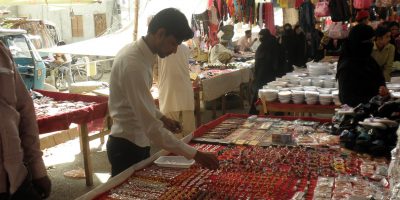
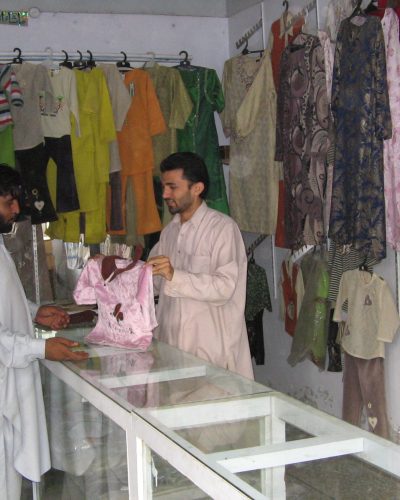
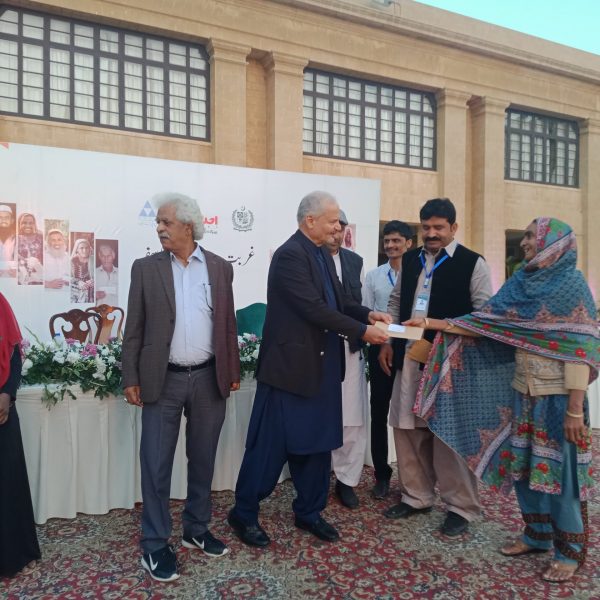
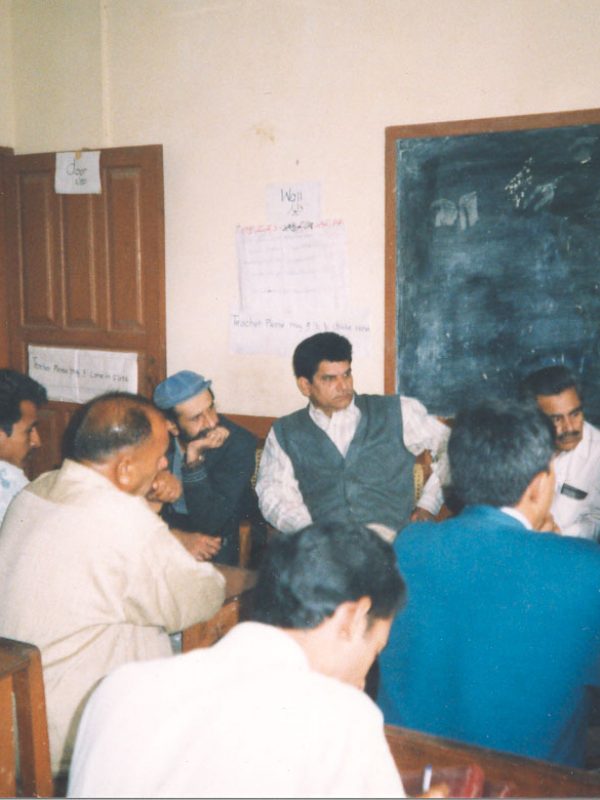
Prime Minister Interest Free Loan (PMIFL)
The Prime Minister Interest Free Loan scheme was introduced by the federal government of Pakistan and we were one of those institutions which carried the scheme to the general public. Through this project we provided interest free loans to small business owners in four Union Council (UC) in district Badin. We have introduced the concept of Karobar Rehnuma Markaz (KRM) and established one in our Badin branch office. The KRMs provide business advisory services to guide and counsel the beneficiaries of interest free loans on how to make their enterprises flourish. The KRMs link the local population with community resource person (LCRP) who are trained to provide services such as teaching them basic business administration and capacity building, providing them with access to new markets as well as helping them make business plans We established total five loan centers with five KRMs in each UC of district Badin including one in our main branch. So far, total funds received from under the scheme was Rs. 40,000,000 which has been revolved many times and still we are offering interest free loans to continue this to benefit the overall society. Under interest free loan average exposure is Rs. 17,000 and presently we have a portfolio of total 2247 borrowers, 785 male and 1462 female
The Prime Minister Interest Free Loan scheme was introduced by the federal government of Pakistan and we were one of those institutions which carried the scheme to the general public. Through this project we provided interest free loans to small business owners in four Union Council (UC) in district Badin. We have introduced the concept of Karobar Rehnuma Markaz (KRM) and established one in our Badin branch office. The KRMs provide business advisory services to guide and counsel the beneficiaries of interest free loans on how to make their enterprises flourish. The KRMs link the local population with community resource person (LCRP) who are trained to provide services such as teaching them basic business administration and capacity building, providing them with access to new markets as well as helping them make business plans
We established total five loan centers with five KRMs in each UC of district Badin including one in our main branch. So far, total funds received from under the scheme was Rs. 40,000,000 which has been revolved many times and still we are offering interest free loans to continue this to benefit the overall society. Under interest free loan average exposure is Rs. 17,000 and presently we have a portfolio of total 2247 borrowers, 785 male and 1462 female.
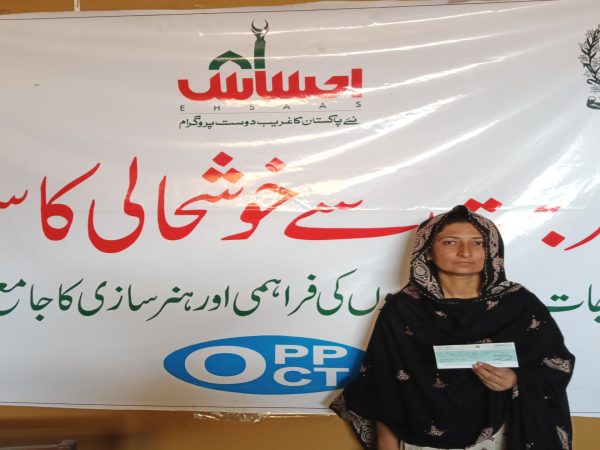
NPGP Interest Free Loan
NPGP IFL is a project carried by the OPRCT to provide interest free loans to small business owners. Initial funds of PKR 33.9 million is provided by PPAF for the project however OPRCT has been able to disburse PKR 165.6 million through effective revolving of the given funds. Total of 6,143 beneficiaries have been served under this project comprising 3,251 males and 2,892 females. Current outstanding portfolio of this project is PKR 32.6 million with 1,653 borrowers out of which 364 are female. Recovery rate under this project is exceptional and it is above 99.5%.
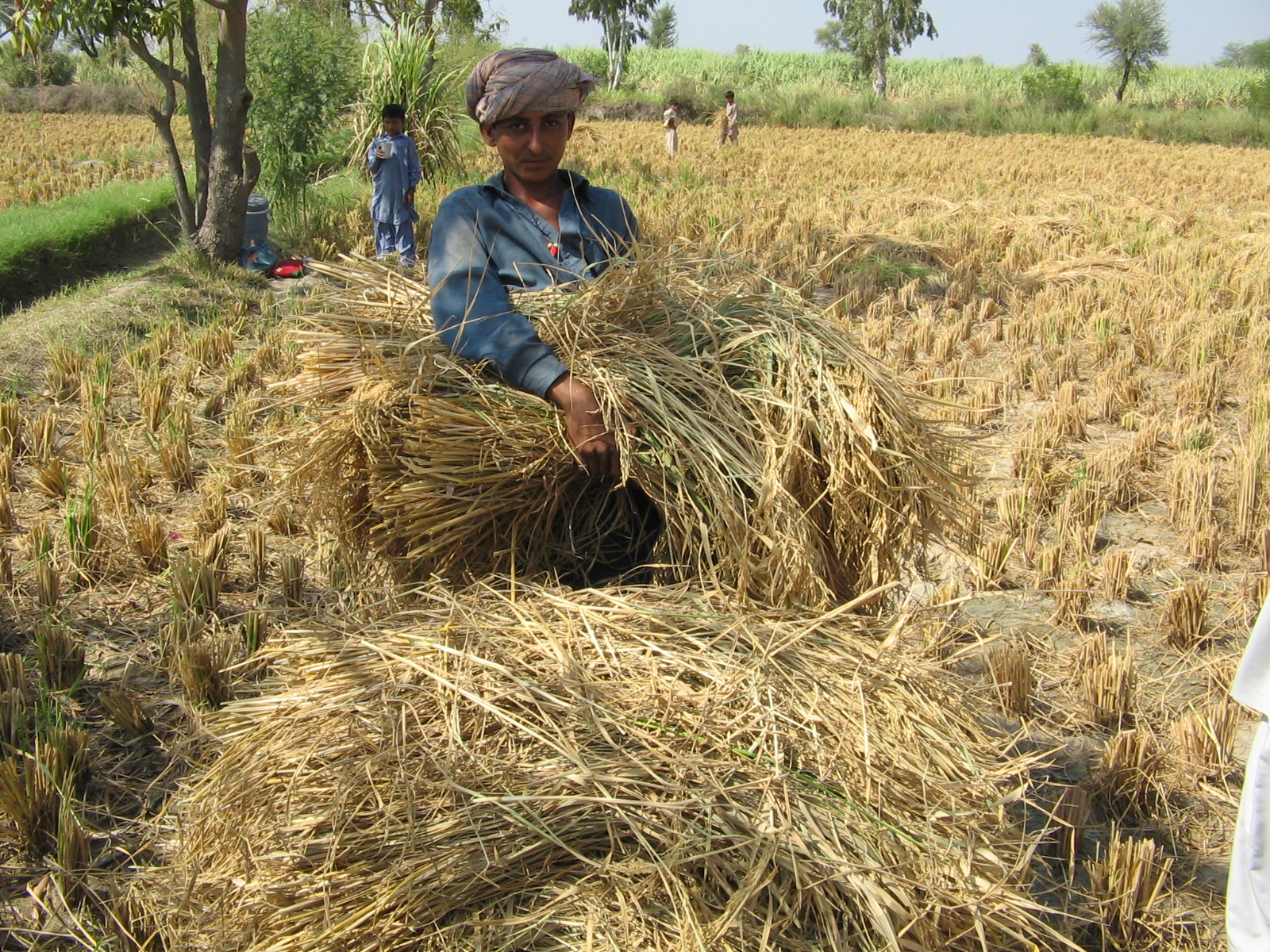
Hamqadam - Agricultural Program
In December 2018 Engro Fertilizer Limited entered into a memorandum of understanding to launch a project under CSR program namely “Hamqadam” to provide agricultural interest free loan to small landholders in Sindh. Both are engaged in the program in their common objective which serves the society as a whole. The program consists of many projects for the benefits of small farmers. First three phases of the project have been completed and 100% recovery has been made and deposited to the designated bank of Engro Fertilizer Limited. The first stage of phase four has also been completed with distribution of fertilizer to 671 farmers having a financial impact of PKR 59 million. Its collection and recovery commenced in April 2021.
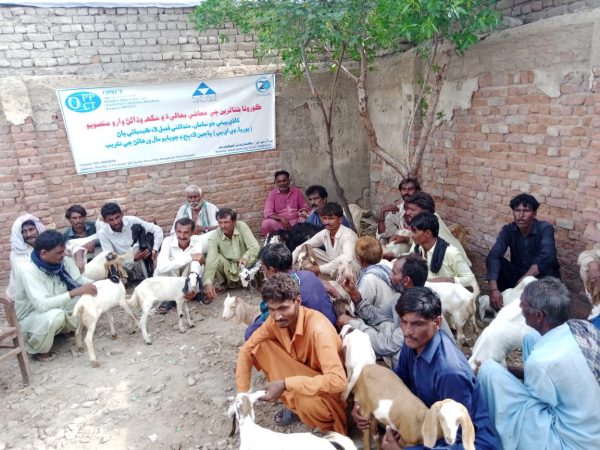
COVID 19 Emergency Response
OPRCT with PPAF has completed an Emergency Response Program for the directly affected small communities. The program was launched considering the financial impact of COVID 19 on these small communities. PPAF has granted PKR 20 million inclusive of in kind grant and OPRCT has managed to access those communities and target 3,888 beneficiaries for distribution of Food packages, Agricultural inputs, Kitchen Garden and livestock to let those affected communities survive the period of financial crises. The project was successfully completed by OPRCT within the stipulated timeline agreed with PPAF for completion of project.
Mat Making
During regular monitoring visits to Khairpur district, during the financial year 2010, our field officers noticed many families making mats with no substantial benefits from its sales. After some research, it was discovered that: over 20,000 families are involved in the activity of mat making which is their only source of income. On average 05 members of each family, most of which are women, produce 8-10 mats per day; dates are the main crops of Khairpur and there is enormous need of mats in production and storage process of dates therefore demand of mats was very high in Khairpur; mat makers did not have access to wholesale or retail market and they had to sell mats to middlemen who were exploiting their position by buying mats at very low rates and selling them at profit of more than 200% of its cost. It was observed that middlemen purchase mats from mat makers during the period of November to April at an average price of Rs. 15 per mat and from May to July at price of Rs. 35-45 per mat. These mats are subsequently sold in market at wholesale price of Rs. 70-90 per mat during July and August to date growers. Through simple hoarding of mats the middleman was able to make a profit of Rs. 35-45 per mat which is more than 200% of its average cost. Due to financial limitations mat makers were not able to access the main market neither were they eligible for microfinance to help them transport their product to the main market by themselves. OCT (now OPRCT) with intention to raise living standards of mat makers performed its role as the middlemen so that the mat makers were able to receive the higher profits. In May, 2011 OCT bought the mats from makers at higher price so that middlemen had to raise their prices to attract supply to them. OCT continues its role and causes the raise in price offered by middlemen upto Rs. 55 per mat. After this OCT gave the mat makers storing capabilities by giving them one month loan / advance for storing expenses amounting to Rs. 3,500 to 5,000 per family per month. They also helped create a group of mat makers which led to better bargaining capabilities. Also a village committee was formed and made responsible to check the quality and stock in the village as well as the payments to mat makers. As a result of OCTs intervention, mat makers’ earnings have doubled. For this project OCT confined itself to only 9 villages.
During regular monitoring visits to Khairpur district, during the financial year 2010, our field officers noticed many families making mats with no substantial benefits from its sales. After some research, it was discovered that: over 20,000 families are involved in the activity of mat making which is their only source of income. On average 05 members of each family, most of which are women, produce 8-10 mats per day; dates are the main crops of Khairpur and there is enormous need of mats in production and storage process of dates therefore demand of mats was very high in Khairpur; mat makers did not have access to wholesale or retail market and they had to sell mats to middlemen who were exploiting their position by buying mats at very low rates and selling them at profit of more than 200% of its cost. It was observed that middlemen purchase mats from mat makers during the period of November to April at an average price of Rs. 15 per mat and from May to July at price of Rs. 35-45 per mat.
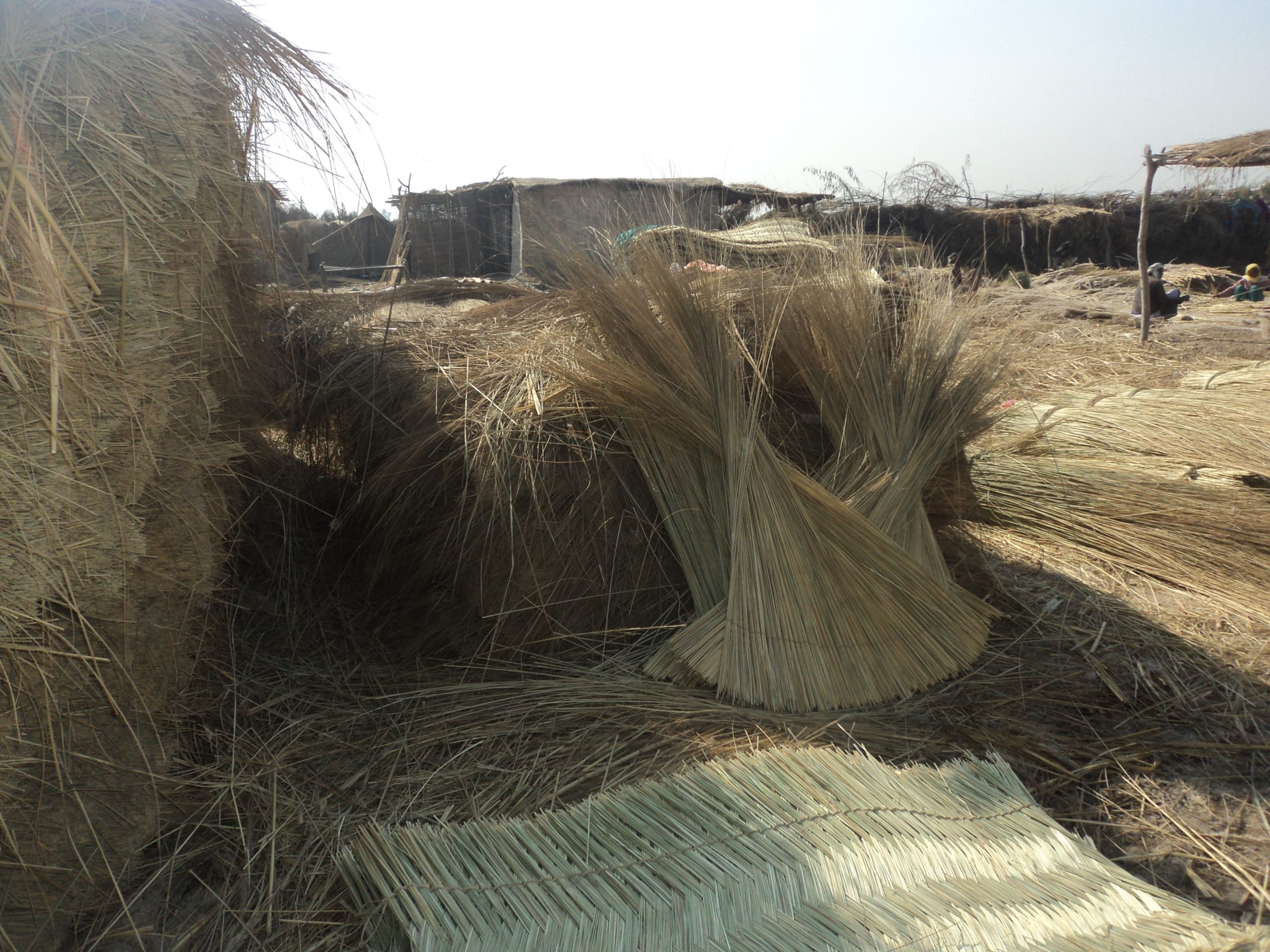
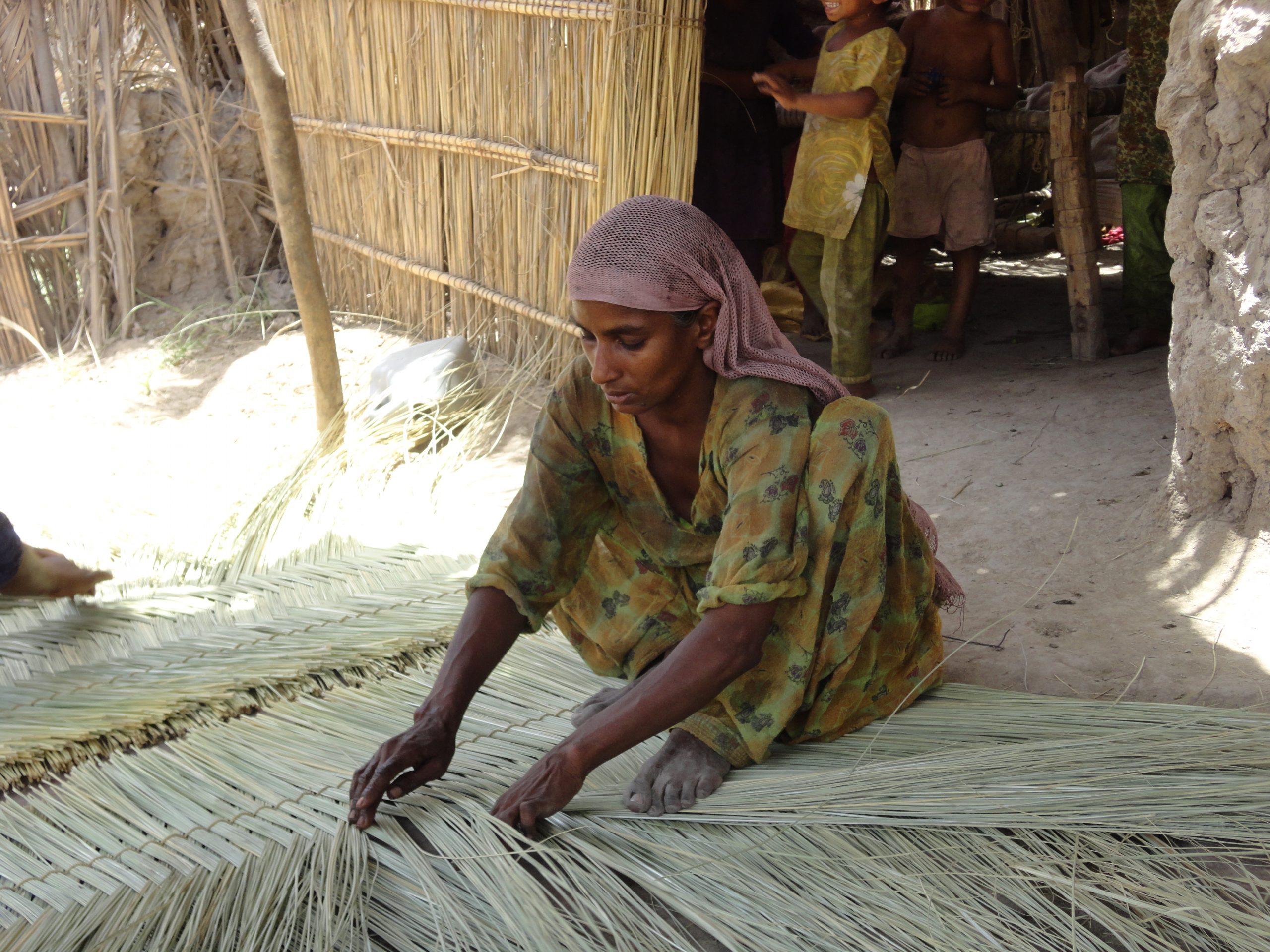
These mats are subsequently sold in market at wholesale price of Rs. 70-90 per mat during July and August to date growers. Through simple hoarding of mats the middleman was able to make a profit of Rs. 35-45 per mat which is more than 200% of its average cost. Due to financial limitations mat makers were not able to access the main market neither were they eligible for microfinance to help them transport their product to the main market by themselves. OCT (now OPRCT) with intention to raise living standards of mat makers performed its role as the middlemen so that the mat makers were able to receive the higher profits. In May, 2011 OCT bought the mats from makers at higher price so that middlemen had to raise their prices to attract supply to them. OCT continues its role and causes the raise in price offered by middlemen upto Rs. 55 per mat. After this OCT gave the mat makers storing capabilities by giving them one month loan / advance for storing expenses amounting to Rs. 3,500 to 5,000 per family per month. They also helped create a group of mat makers which led to better bargaining capabilities. Also a village committee was formed and made responsible to check the quality and stock in the village as well as the payments to mat makers. As a result of OCTs intervention, mat makers’ earnings have doubled. For this project OCT confined itself to only 9 villages.
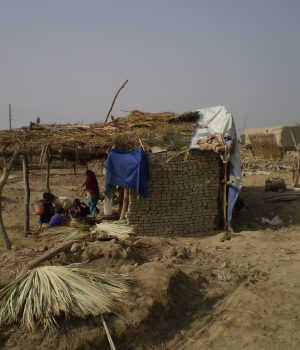
The Ultra Poor (TUP) Project
Through the TUP project, we provided grants to the poorest community, living alongside the coast of Karachi. In addition to grants they are also provided with food and health facilities for their basic survival. The aim of the project was to provide these communities with basic business skills that would enable them to find employment and generate income. It was also focused that they would have an understanding and know the importance of savings too so that they would be able to better manage their lives. The total number of Ultra Poor households population in the targeted area was 400 out of which 200 were selected as beneficiaries of this project. The selection was done by seeing if one of the following criteria is met: a widow living with children; female headed households; disabled persons (living with children); if the source of income was at risk (no regular income); if the income of from all family members was less than Rs. 25 per day per head; or if they have no valuable/ productive asset. Then each of the households were given Rs. 15,000 in one go (to start a business, which would give them a steady monthly income), a monthly allowance of Rs. 1,000 and a monthly health subsidy of Rs. 1,000 were also given. The grant was given with the intention that the targeted sample become eligible for microcredit so that access to finance would make them flourish their livings. The project successfully resulted in a decline in the ultra-poor living in that area and about 50% of the households have started receiving loans from OPP-OCT.
Through the TUP project, we provided grants to the poorest community, living alongside the coast of Karachi. In addition to grants they are also provided with food and health facilities for their basic survival. The aim of the project was to provide these communities with basic business skills that would enable them to find employment and generate income. It was also focused that they would have an understanding and know the importance of savings too so that they would be able to better manage their lives. The total number of Ultra Poor households population in the targeted area was 400 out of which 200 were selected as beneficiaries of this project.
The selection was done by seeing if one of the following criteria is met: a widow living with children; female headed households; disabled persons (living with children); if the source of income was at risk (no regular income); if the income of from all family members was less than Rs. 25 per day per head; or if they have no valuable/ productive asset. Then each of the households were given Rs. 15,000 in one go (to start a business, which would give them a steady monthly income), a monthly allowance of Rs. 1,000 and a monthly health subsidy of Rs. 1,000 were also given. The grant was given with the intention that the targeted sample become eligible for microcredit so that access to finance would make them flourish their livings. The project successfully resulted in a decline in the ultra-poor living in that area and about 50% of the households have started receiving loans from OPP-OCT.
We established four offices in each district and every office was targeting 500 beneficiaries independently. A survey was conducted by each of the offices in their respective areas to assess the needs of assets required to transfer to beneficiaries. As result of survey and assessment 1,459 (73%) households were given livestock, particularly goats, 541 (27%) beneficiaries were given multiple assets including shops, tailoring capabilities, donkey carts, pedestal cycles, seeds etc. Out of these 2,000 beneficiaries 1,800 were given Egyptian hens also. In addition every beneficiary were given mosquito nets and one smokeless stove for improving the environmental conditions within their homes which would in turn improve their health. During the projected period health services were given to all 2,000 targeted households at their doorsteps through LHV, LHW and visiting MBBS Doctors. The health program was continued in those areas. The health team has been providing health services and looking after the other project activities, like the status of assets.
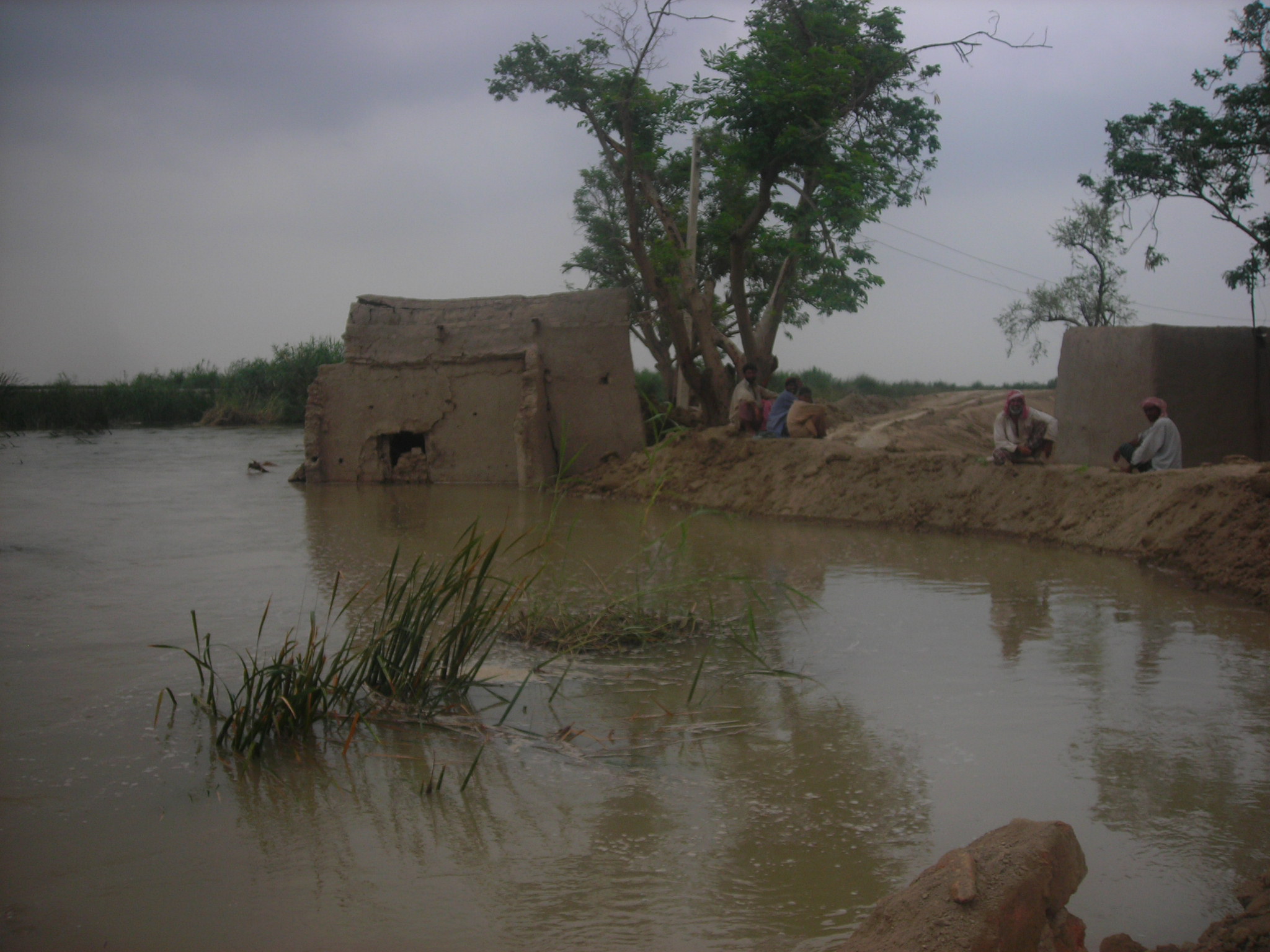
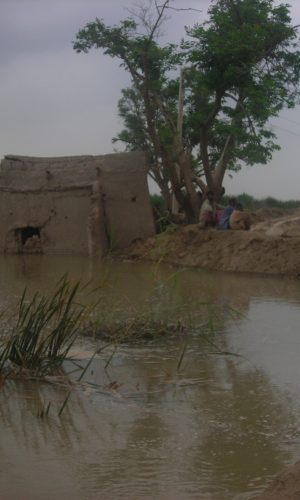
Disaster (Flood) Rehabilitation
This project was also carried for flood affected communities. After the 2010 flood, which devastated parts of Sindh, We along with ten of our partner organizations, undertook a rehabilitation project. OPPOCT received a grant equivalent to Rs. 70,478,475 from Misereor for the purchase of wheat seeds and fertilizers. In addition to the grant, we with our partner organizations put in the operational cost of the project so that the total grant received may be fully invested to beneficiaries. Farmers who had five or less than five acres of land were selected to be the beneficiaries of this project. Each farmer received up to three bags of seeds and fertilizers as grant, whereas, other costs were borne by the farmers. Through this project, 15,661 acres of land was cultivated for wheat. The 4,995 farmers who were beneficiaries now had food and a source of income for their families again.
OPRCT – CONTRIBUTION AT A GLANCE
| Project | Beneficiaries | Period | Brief Summary | Donor |
|---|---|---|---|---|
| Microcredit | 411,859 Entrepreneurs and Farmers included (129,494 women) | 1987 – Present | Providing Microcredit to low income communities in Pakistan (Mainly Sindh and Punjab) | Pakistan Poverty Alleviation Fund (PPAF) and through OPRCTs own resources |
| Women Livestock Cooperative Farming | 29,931 Women | 2004 – Present | Providing Loans to women for Livestock. Mostly women whose families do not own land | PPAF |
| The Ultra Poor | 200 Poor Families in Kemari, Karachi | 2007 – 2010 | Asset Transfer (in cash) and skill and business building | PPAF / CGAP (Washington) |
| Capacity Building of Small CBOs | 32 Small Community Based Organizations | 2008 – 2021 | Capacity building of small CBOs through management and financial training as well as bearing management and operational costs. Als, providing small MFIs with a line of credit | PPAF and through OCTs own resources |
| Flood Rehabilitation | 4995 Farmers | 2010 | We provided farmers who had lost their crops in the flood seeds and fertilizers. We also setup medical camps in villages | MISEREOR |
| Mat Making | 1869 | 2010 – 2011 | We perform our role as a middleman to increase Mat Makers income | PPAF / IFAD |
| Social Safety Net | 2,000 Poor Families living in flood affected areas | 2011 – 2012 | Asset Transfers, Medication and other health services (PKR 40 Million in asset Transfer) | PPAF |
| Prime Minister Interest Free Loan | 2247 | 2014 – Present | Providing Interest Free Loans to small business owners | PPAF |
| Hamqadam Agriculture Program | 1193 | 2018 – Present | Facilitation to Engro in selection and recovery. Farmers having not more than 12.5 acre land | ENGRO |
| The National Poverty Graduation Program (NPGP) | 602 | 2020 – Present | Started Prime Minister Interest Free Loan Scheme carried out as revolving of amount as PPAF proposed as “Ehsaas Interest Free Loan” | PPAF |
| Pandemic COVID 19 Economic Revival Assistance | 3888 | 2020 | Asset Transferred (Goats) 1762 and provided seed and Fertilizers for Kitchen gardening 517, Agriculture its/ inputs 698 and distribution of Food Package (Rashan Bags 911) | PPAF |
| IFL Phase II, Umerkot | 3664 | 2021-Present | Providing interest free loans for agriculture, livestock and small enterprise to less privilege people of Umerkot District in Sindh. | PPAF |
| Project | Microcredit |
|---|---|
| Beneficiaries | 411,859 Entrepreneurs and Farmers included (129,494 women) |
| Period | 1987 – Present |
| Brief Summary | Providing Microcredit to low income communities in Pakistan (Mainly Sindh and Punjab) |
| Donor | Pakistan Poverty Alleviation Fund (PPAF) and through OPRCTs own resources |
| Project | Women Livestock Cooperative Farming |
|---|---|
| Beneficiaries | 29,931 Women |
| Period | 2004 – Present |
| Brief Summary | Providing Loans to women for Livestock. Mostly women whose families do not own land |
| Donor | PPAF |
| Project | The Ultra Poor |
|---|---|
| Beneficiaries | 200 Poor Families in Kemari, Karachi |
| Period | 2007 – 2010 |
| Brief Summary | Asset Transfer (in cash) and skill and business building |
| Donor | PPAF / CGAP (Washington) |
| Project | Capacity Building of Small CBOs |
|---|---|
| Beneficiaries | 32 Small Community Based Organizations |
| Period | 2008 – 2021 |
| Brief Summary | Capacity building of small CBOs through management and financial training as well as bearing management and operational costs. Als, providing small MFIs with a line of credit |
| Donor | PPAF and through OCTs own resources |
| Project | Flood Rehabilitation |
|---|---|
| Beneficiaries | 4995 Farmers |
| Period | 2010 |
| Brief Summary | We provided farmers who had lost their crops in the flood seeds and fertilizers. We also setup medical camps in villages |
| Donor | MISEREOR |
| Project | Mat Making |
|---|---|
| Beneficiaries | 1869 |
| Period | 2010 – 2011 |
| Brief Summary | We perform our role as a middleman to increase Mat Makers income |
| Donor | PPAF / IFAD |
| Project | Social Safety Net |
|---|---|
| Beneficiaries | 2,000 Poor Families living in flood affected areas |
| Period | 2011 – 2012 |
| Brief Summary | Asset Transfers, Medication and other health services (PKR 40 Million in asset Transfer) |
| Donor | PPAF |
| Project | Prime Minister Interest Free Loan |
|---|---|
| Beneficiaries | 2247 |
| Period | 2014 – Present |
| Brief Summary | Providing Interest Free Loans to small business owners |
| Donor | PPAF |
| Project | Hamqadam Agriculture Program |
|---|---|
| Beneficiaries | 1193 |
| Period | 2018 – Present |
| Brief Summary | Facilitation to Engro in selection and recovery. Farmers having not more than 12.5 acre land |
| Donor | ENGRO |
| Project | The National Poverty Graduation Program (NPGP) |
|---|---|
| Beneficiaries | 602 |
| Period | 2020 – Present |
| Brief Summary | Started Prime Minister Interest Free Loan Scheme carried out as revolving of amount as PPAF proposed as “Ehsaas Interest Free Loan” |
| Donor | PPAF |
| Project | Pandemic COVID 19 Economic Revival Assistance |
|---|---|
| Beneficiaries | 3888 |
| Period | 2020 |
| Brief Summary | Asset Transferred (Goats) 1762 and provided seed and Fertilizers for Kitchen gardening 517, Agriculture its/ inputs 698 and distribution of Food Package (Rashan Bags 911) |
| Donor | PPAF |

Social Safety Net
Social Safety Net was a project that was initiated in response to heavy rains and floods in different areas of Sindh. It was initiated with the main aim of helping 2,000 ultra-poor households living in flood affected areas. The project aimed to improve the socioeconomic lives of the ultra-poor by transferring assets to them and providing them healthcare facilities and training on livelihood development and finance. The project was executed in two districts i.e. Khairpur and Thatta. 1,000 beneficiaries were targeted in each of the districts. We established four offices in each district and every office was targeting 500 beneficiaries independently. A survey was conducted by each of the offices in their respective areas to assess the needs of assets required to transfer to beneficiaries. As result of survey and assessment 1,459 (73%) households were given livestock, particularly goats, 541 (27%) beneficiaries were given multiple assets including shops, tailoring capabilities, donkey carts, pedestal cycles, seeds etc. Out of these 2,000 beneficiaries 1,800 were given Egyptian hens also. In addition every beneficiary were given mosquito nets and one smokeless stove for improving the environmental conditions within their homes which would in turn improve their health. During the projected period health services were given to all 2,000 targeted households at their doorsteps through LHV, LHW and visiting MBBS Doctors. The health program was continued in those areas. The health team has been providing health services and looking after the other project activities, like the status of assets.
Social Safety Net was a project that was initiated in response to heavy rains and floods in different areas of Sindh. It was initiated with the main aim of helping 2,000 ultra-poor households living in flood affected areas. The project aimed to improve the socioeconomic lives of the ultra-poor by transferring assets to them and providing them healthcare facilities and training on livelihood development and finance. The project was executed in two districts i.e. Khairpur and Thatta. 1,000 beneficiaries were targeted in each of the districts.